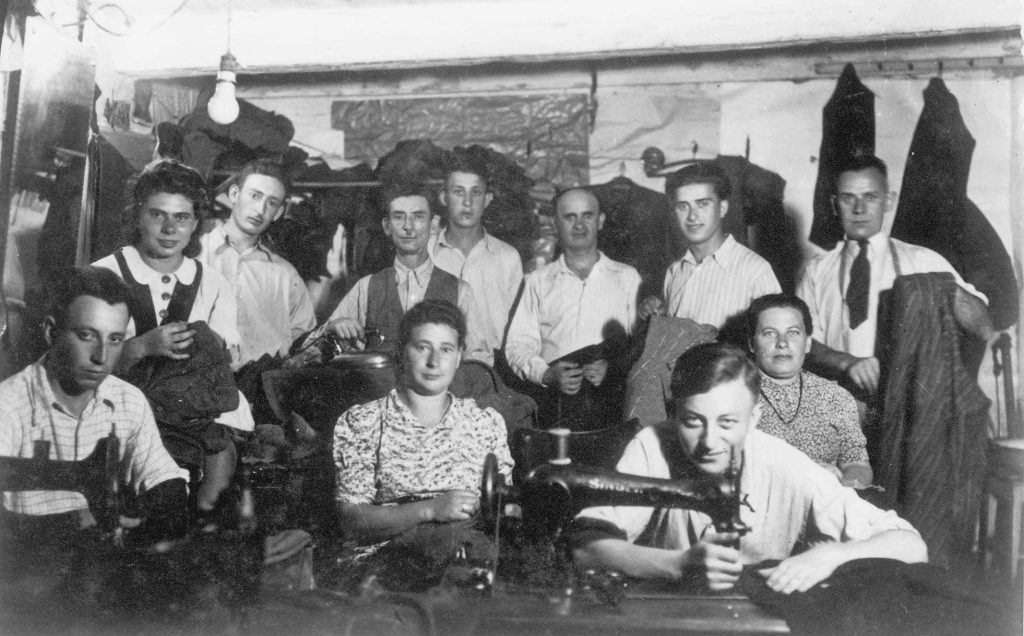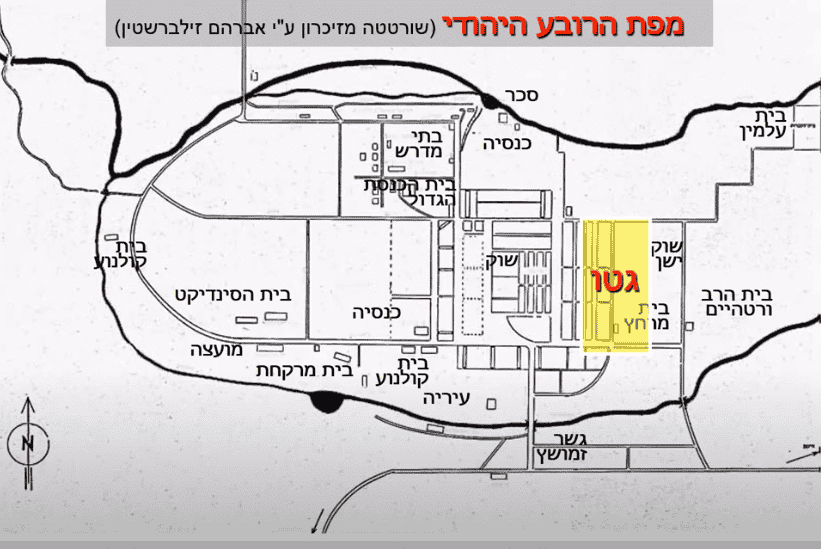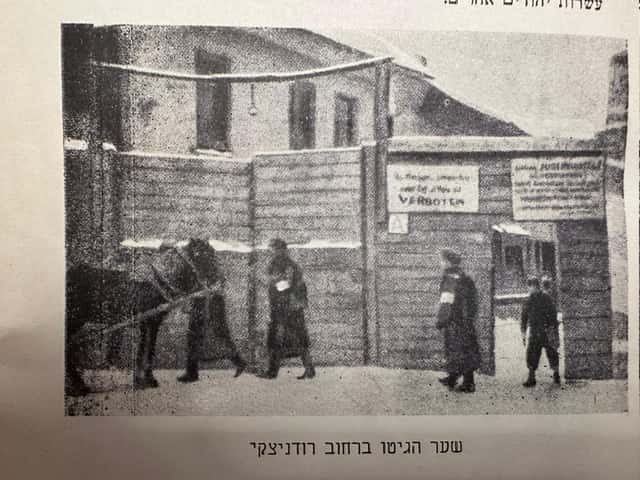Home » The Ghetto
At the beginning of 1940, the Jews of the city were transferred to the ghetto established to the east, where about 6,000 of the Jews of the city and its surroundings were densely concentrated. All Jews aged 12 and over were ordered to wear a white armband with a Star of David in the center. The Germans appointed a 12-member Judenrat (Jewish committee), headed by Shmuel Brand. The Judenrat was tasked with providing the Germans with forced laborers, paying them a ransom, sometimes in cash, and delivering valuables to them. But the Judenrat of Hrubieszow felt that its role was to continue the work of community’s institutions, and it did its best to help the poor and the orphans, and address the needs of the public. It established a public kitchen and a hospital with thirty beds.
In August 1940, about 500 Jews from Czestochowa were brought to the Hrubieszow ghetto, and later, hundreds of Jews from Krakow and Mielec were deported there. By May of 1942, 5,690 Jews were living in the Hrubieszow ghetto. The Germans established four labor camps in the area, and every day, hundreds of Jews, including young boys and girls, worked in building roads, digging canals, or building bridges. They were even sent to work for Polish farmers and owners of estates.
Emanuel Ringelblum reported the following from the Warsaw Ghetto in May 1940: “In Hrubieszow, the Jews slave away outside the city, and are allowed to come into the city to rest only once a week. In return, they receive food.”
On August 13, 1940, the Germans, helped by Polish police forces, rounded up eight hundred Jews and packed them into the local school building, where they were kept for three days without food. Six hundred of them were sent to forced labor in the Belzec camp, and the Germans used them to dig protective trenches along the Soviet border. About half of them died of hunger or disease.
From November 1941 to March 1942, hundreds of Jews from Krakow and Mielcz were deported to Hrubieszow. The Jews of Hrubieszow tried to help the deportees, but they only had meager means at their disposal.



